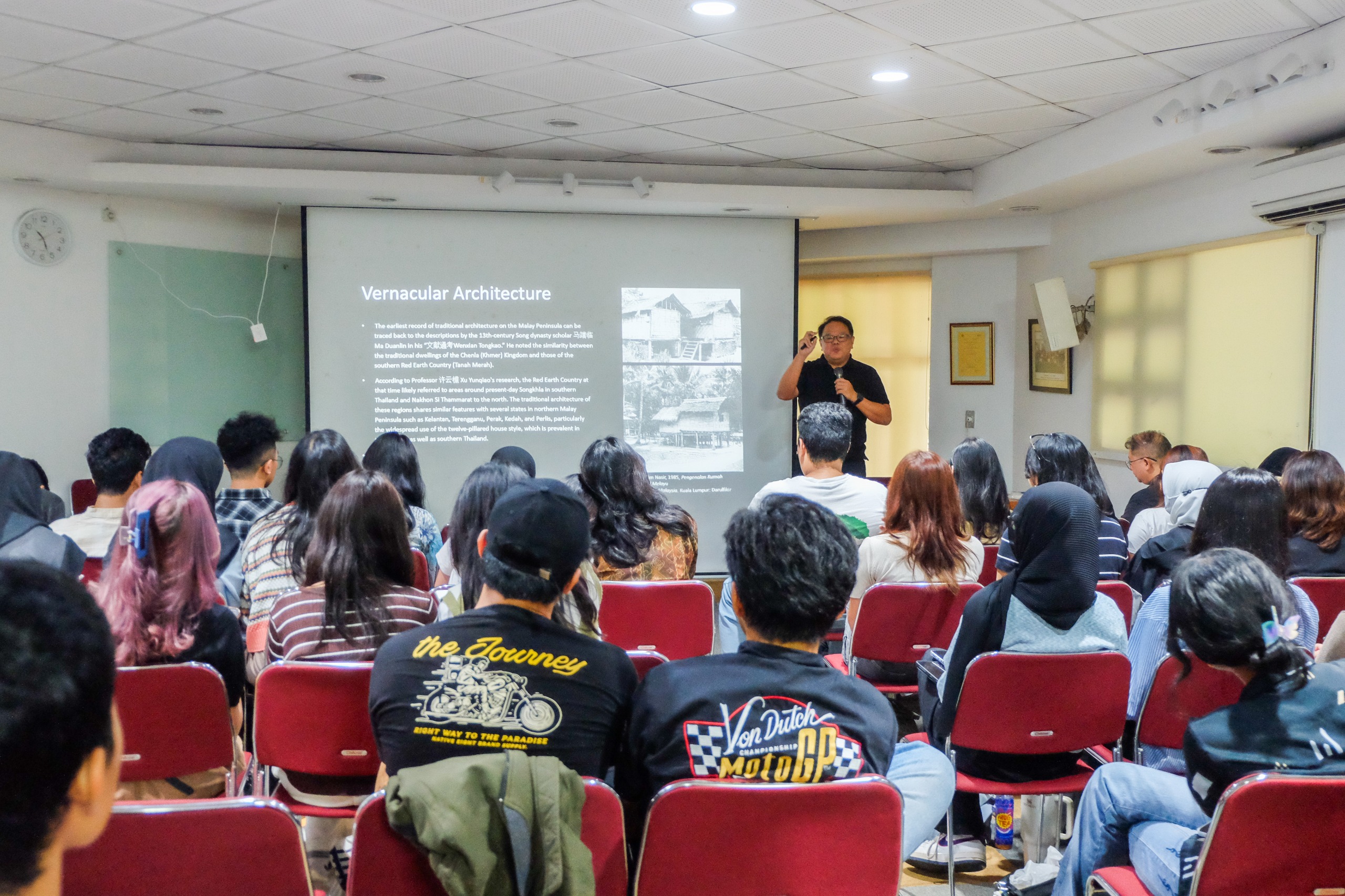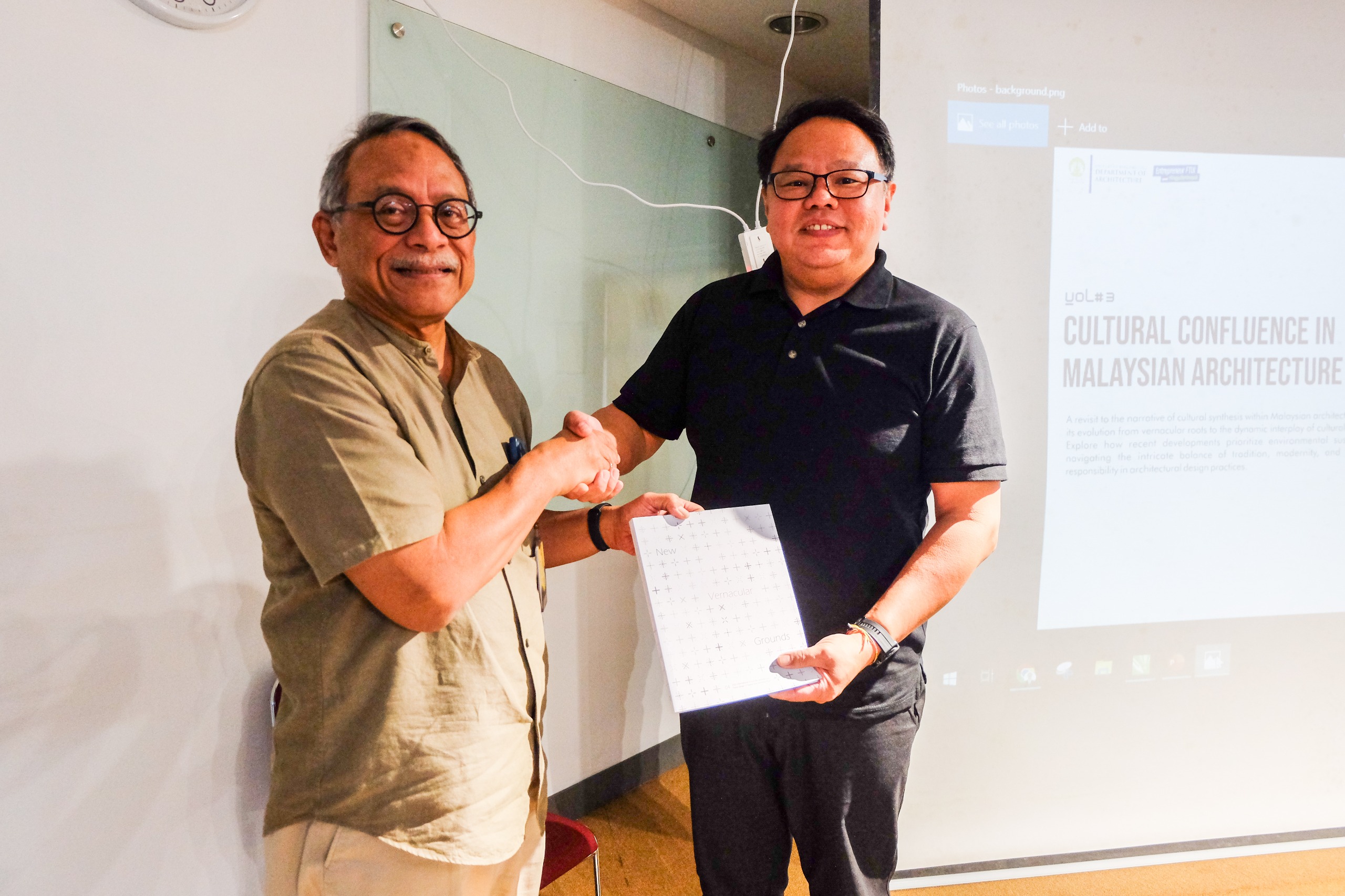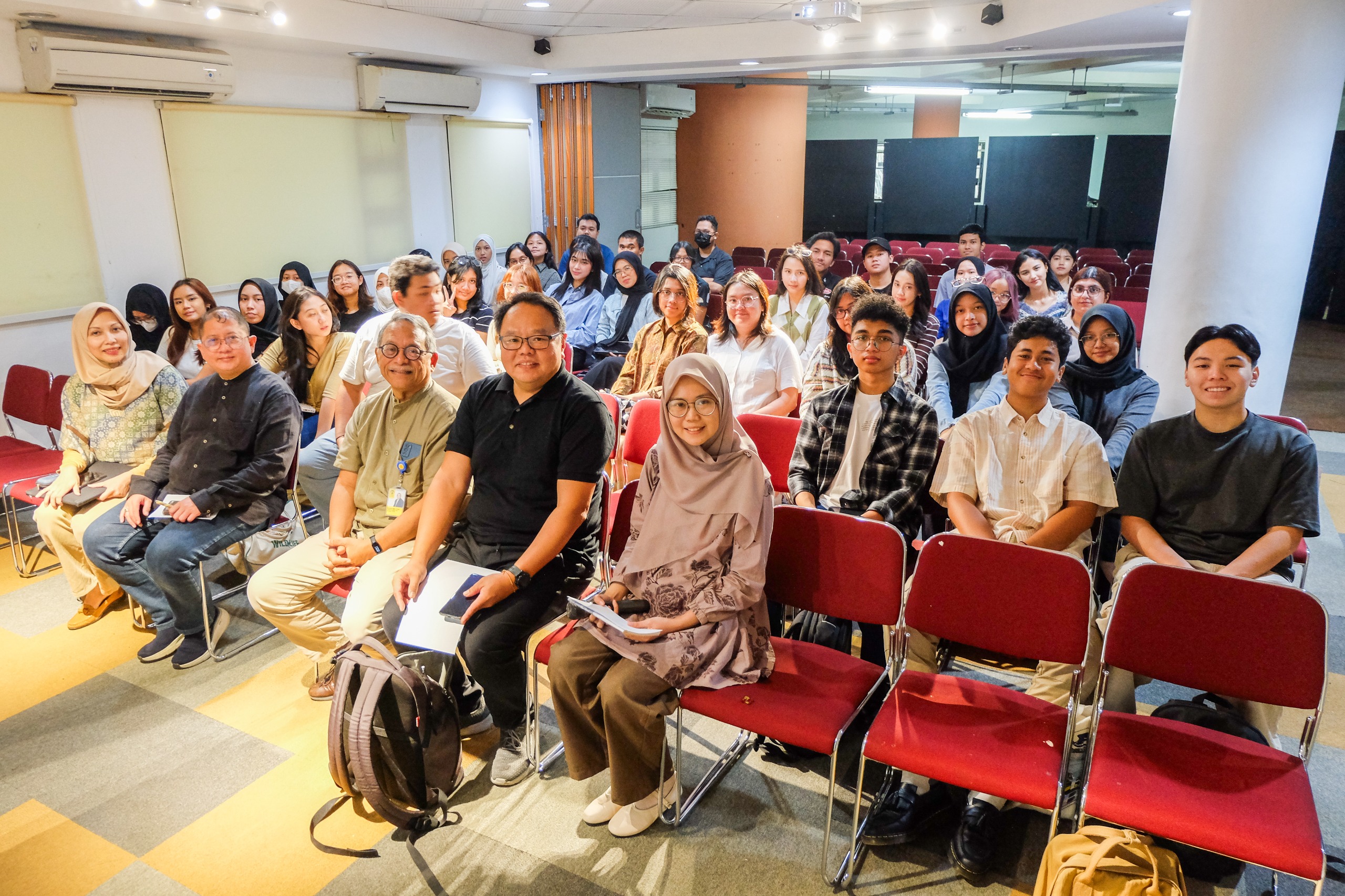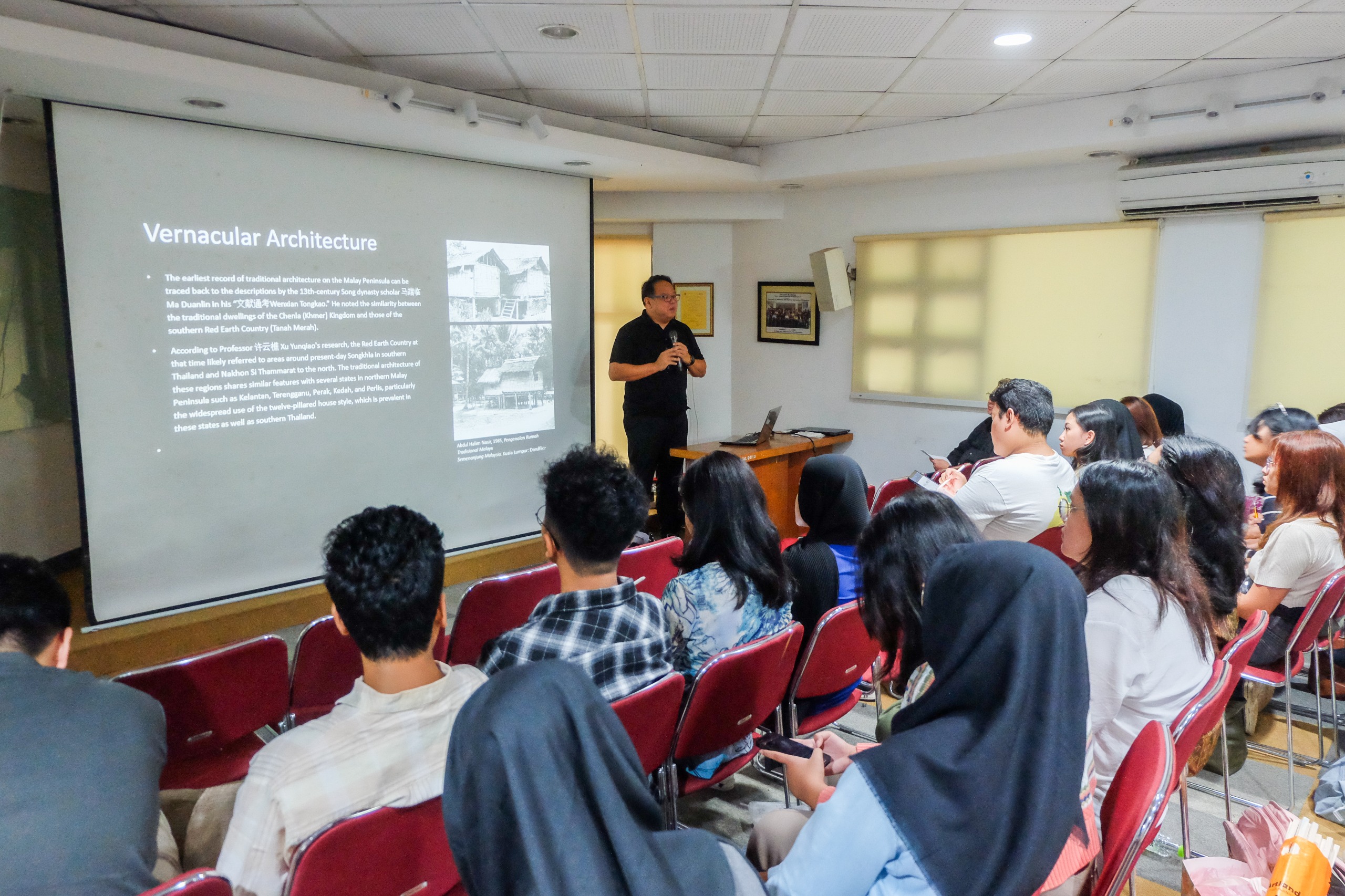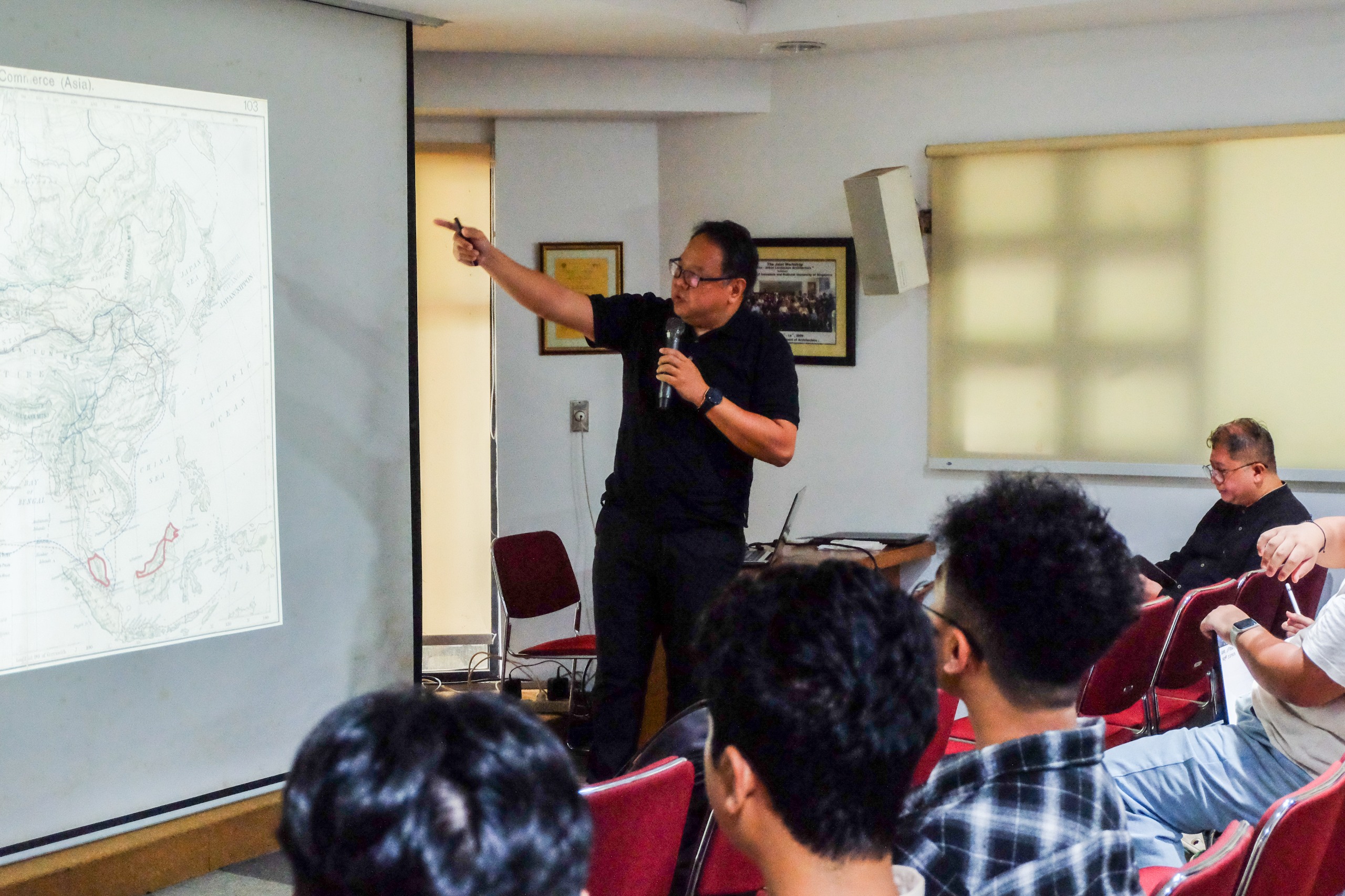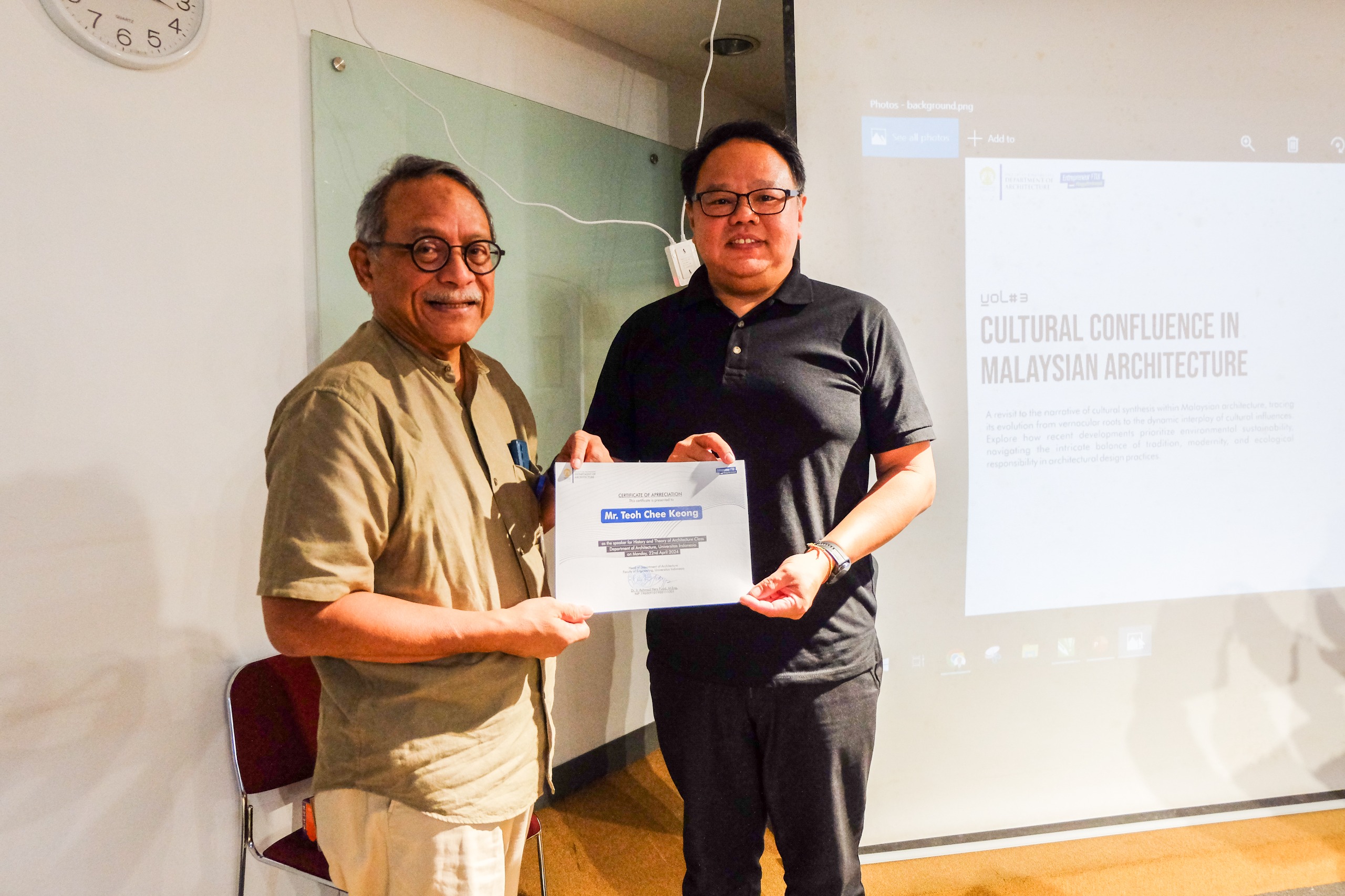On Monday (4/22), the Architecture Study Program, Department of Architecture, Faculty of Engineering, Universitas Indonesia (FTUI) held a lecture featuring a guest lecturer from the School of Architecture and Built Environment UCSI Malaysia, Dr. Teoh Chee Keong. He delivered a lecture titled “Cultural Confluence in Malaysian Architecture.” The lecture, which was a collaboration with the UI Ergonomics Center Laboratory, was held offline in the Multimedia Room, Department of Architecture, FTUI, from 10:00 to 12:30 WIB with participants from the History and Theory of Architecture course.
Before the lecture began, Dr. Ir. Achmad Hery Fuad, M.Eng., as the Head of the Department of Architecture FTUI, expressed in his opening remarks, “We hope this activity can run smoothly and afterwards we will discuss more about collaboration. Hopefully, the students can benefit greatly from this public lecture.”
Dr. Teoh started by explaining about vernacular architecture in Malaysia. He explained that the earliest records of traditional architecture in the Malaya Peninsula can be traced back to the description by the 13th-century Song Dynasty scholar, Ma Duanlin, in his work “Wenxian Tongkao.” He noted the similarities between the traditional dwellings of the Chenla Kingdom (Khmer) and the Red Earth State in the southern part (Tanah Merah).
According to the research of Professor Xu Yunqiao, the Red Earth State at that time likely referred to the area around present-day Songkhla in southern Thailand and Nakhon Si Thammarat in the north. The traditional architecture of this region shares similarities with several states in the northern Malay Peninsula such as Kelantan, Terengganu, Perak, Kedah, and Perlis, especially the widespread use of the twelve-pillar house style, which is common in these states and southern Thailand.
With the rise of colonial imperial powers, starting in the 15th century, European colonial powers including Portugal, the Netherlands, and England, introduced Western urban planning concepts, architectural design, construction techniques, and administrative management systems to the Malaya Peninsula.
“Taking Malacca as an example, shortly after the end of the Malacca Sultanate in 1511, the Portuguese began building a city at the mouth of the Malacca River, applying European urban management concepts to control it. The Portuguese utilized slaves and local inhabitants to obtain laterite stones from Upeh Island, an outermost coral island near Malacca, as the main material for the city walls. In addition to the walls, the Portuguese also began constructing shop houses, military facilities, and houses within the city, using traditional Portuguese construction techniques such as load-bearing stone foundations, brick walls, large wooden floor beams, frames, and tiled roofs, which initiated the first wave of modernization development in Malacca,” explained Dr. Teoh.
During the Dutch colonial period, the Dutch inherited the city walls built by the Portuguese and expanded them according to their urban planning principles. They even started digging canals outside the city walls, forming new defence lines. Like the Portuguese, the Dutch used laterite stones to build the city walls and buildings. However, unlike the Portuguese, the Dutch initiated road planning and encouraged immigration to Malacca.
“Due to Dutch mercantilism and systematic land planning and management, road construction in Malacca was accelerated. Dutch colonial cities such as Malacca and Batavia (now Jakarta) experienced new changes in urban planning and architectural forms, which gradually evolved into unique cultural landscapes found only in colonial territories,” continued Dr. Teoh.
Both Portuguese and Dutch colonizers introduced European architectural techniques and urban management systems to Malacca, which then spread to surrounding areas through traders and other political powers. However, these influences were not entirely one-sided. As scientific knowledge advanced, European colonizers initially imposed their culture forcefully but eventually compromised and adapted to local climates and customs, resulting in unique colonial-style architecture. Some Southeast Asian traditional architectural cultures even influenced Europe, indicating a mutually beneficial cultural exchange. This cultural interaction phenomenon can be seen as an early stage of globalization.
FTUI Dean, Prof. Dr. Ir. Heri Hermansyah, S.T., M.Eng., IPU, said, “I would like to thank Teoh Chee Keong for sharing his knowledge with our students. With the knowledge provided by Teoh Chee Keong, we can learn about the history of architecture in Malaysia, especially regarding cultural convergence. Hopefully, the participants in this public lecture can absorb the information presented well.”
Teoh Chee Keong serves as Deputy Dean at the School of Architecture and Built Environment, UCSI Malaysia. He obtained his BArch (1999) and MArch (2005) degrees from Chung Yuan Christian University, Taiwan. In 2015, he was nominated for the QS Stars Award for Reimaging Education. Teoh Chee Keong’s areas of interest include Architecture and Pedagogy, Cultural Studies, and Problem-Based Learning.
***
Office of Public Communication
Faculty of Engineering, Universitas Indonesia

